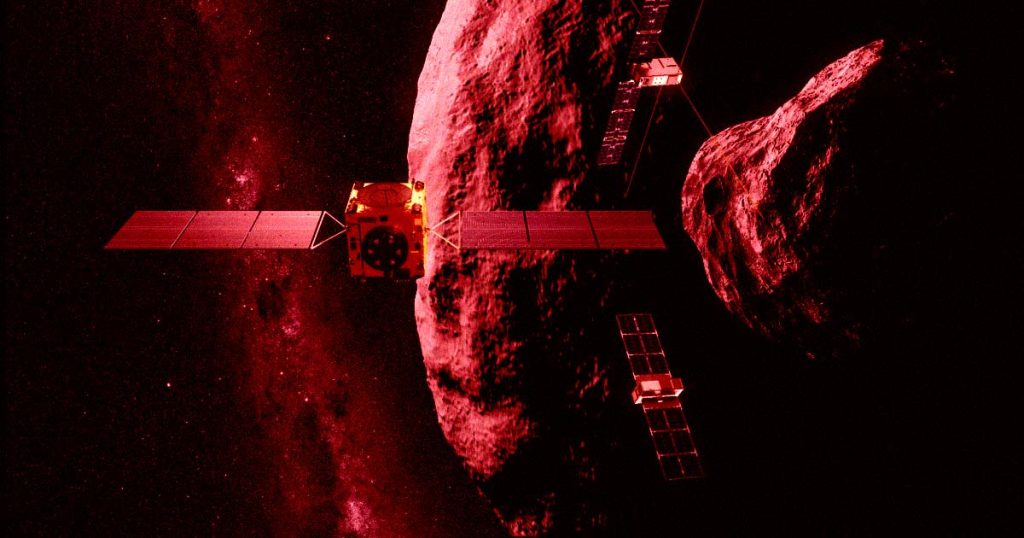
Europe Deploys Spacecraft to Investigate Extraterrestrial “Crash Scene” (Image Credit: futurism-com)
Hera Time
The European Space Agency (ESA) just launched its much-anticipated effort to explore the wreckage of the asteroid Dimorphos, the cosmic body that NASA successfully obliterated last year during its pioneering planetary defense test in 2022.
The “crash scene” surveillance team includes the spacecraft Hera as well as two tiny cubesats, which launched today onboard a SpaceX Falcon 9 rocket. Hera was successfully deployed by the rocket around 76 minutes after takeoff.
The mission marks the next phase of NASA’s Double Asteroid Redirection Test (DART), an effort that involved smashing an asteroid system with a sacrificial spacecraft to see if humanity could meaningfully alter the course of a potentially dangerous asteroid.
The DART mission was deemed a full success. But there are still questions about what exactly went down during the intentional cosmic collision and the full extent of the aftermath — and that’s where Hera comes in.
The Hera mission has been described by ESA scientists as a “crash scene investigation,” with the mission’s principal investigator Patrick Michel telling CNN that “Hera will close the loop by providing us in detail the final outcome of the DART impact.”
Generalist and Specialists
Instead of targeting a single asteroid, the DART mission targeted a binary asteroid system, which comprises two distinct celestial bodies: a larger asteroid named Didymos, and its smaller companion, Dimorphos. Dimorphos, which is considered a moonlet to Didymos, is what NASA actually smashed into — thus pushing Didymos off course.
If things go to plan, Hera will reach the crash site by October 2026. Armed with 11 instruments, it’ll spend six weeks analyzing the scene before sending its shoebox-sized cubesats named Juventas and Milani in to do some specialty work. Juventas will use radar to spy beneath the asteroids’ surface, while Milani will eye the rocks with a special imager designed to deduce their mineral compositions.
In the immediate aftermath of DART, NASA was thrilled by the degree to which it disintegrated Didymos. While a cubesat sent by NASA at the time of the collision did record some important data, plenty of questions remain. How did the crash impact Didymos’ internal structure? And why did its orbit speed around its larger companion change so much?
Hopefully, we’ll soon get some answers, courtesy of Hera.





